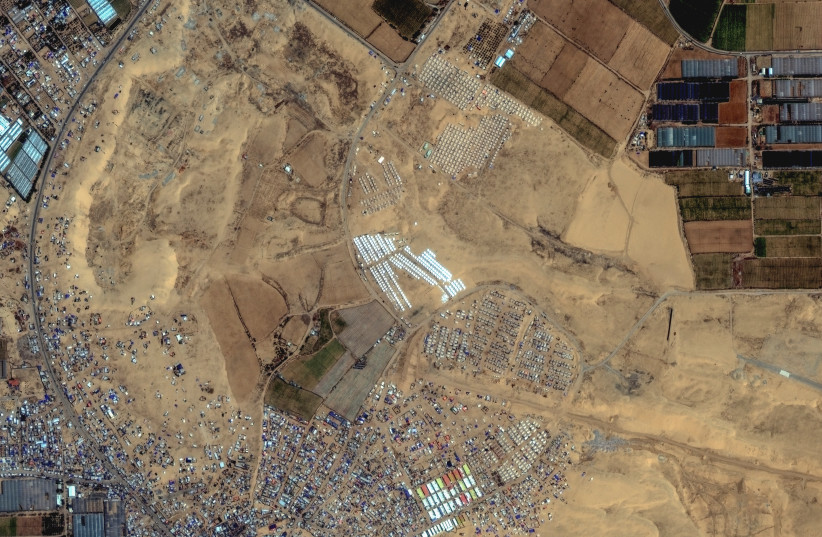Between 150,000-200,000 Palestinians leave Rafah due to upcoming IDF invasion
Around 150,000-200,000 Palestinian civilians have already left Rafah since April 7 and as the military gets ready for a long-discussed invasion, according to the IDF.
At one point, there were around 1.4 million Palestinian civilians in Rafah.
But after the IDF withdrew from Khan Yunis on April 7, a significant minority of civilians started to stream out of Rafah and back to Khan Yunis or to al-Muwasi on the southern Gaza coast.
The IDF hopes that more civilians will follow this lead as new tent cities are set up for civilians to evacuate Rafah to Khan Yunis, al-Muwasi, and central Gaza.
A more serious push for the IDF to invade Rafah
Further, the IDF’s push to start the Rafah invasion has gotten more serious with some increasing frustration with the war cabinet for not yet having approved the operation.

From the perspective of the IDF and Defense Minister Yoav Gallant, moving forward with the operation is the only way to break the impasse with Hamas over hostage negotiations as well as to eliminate the terror group’s last relatively large contingent of four battalions (out of an original 24 battalions.)
At the same time, the Nahal Brigade and remaining aspects of IDF Division 162 which have taken the lead in northern Gaza for much of the war, are finally exiting the Strip.
It is anticipated that they will return, possibly also to participate in operations in Rafah, but the IDF high command also believes these forces need a rest, so it was unclear exactly when they would return to combat.
In addition, IDF sources suggested that IDF Chief of Staff Lt.-Gen. Herzi Halevi will appoint a new head of military intelligence to replace outgoing chief Maj.-Gen. Aharon Haliva announced on Monday that he wished to step down to take responsibility for the failure to foresee and stop Hamas’s October 7 invasion of the Israeli South.
Initially, there were questions about whether Halevi would make this appointment or whether the next IDF chief would, given that Halevi is expected to resign in the coming weeks or months for his role in failing to stop October 7.
One possibility is that Halevi will resign after the Rafah invasion.
Another is that he will resign after a large operation against Hezbollah in Lebanon.
Before withdrawing, the Nahal Brigade over Wednesday and Thursday eliminated several terrorists and destroyed terrorist infrastructure in the IDF corridor splitting off northern Gaza from the rest of the Gaza Strip, the IDF added.
Over the last few months, the soldiers, in cooperation with the Yahalom Unit and combat engineers, located and destroyed over 20 km. of terror tunnels in the corridor area.
In one of the attacks this week, the Nahal Brigade forces identified two terrorists attempting to launch rockets toward Israeli territory, and the air force killed them.
The IAF also destroyed the rocket launching platform and the ammunition warehouse in which one of the terrorists was based following the launch attempt.
In another incident, the IDF reported that IAF fighter jets pounded terrorist infrastructure in the northern Gaza area of Shati from which Hamas terrorists had fired rockets against IDF troops over in central Gaza.
On Wednesday, the air force also killed a Hamas sniper terrorist cell in the central Gaza area of Nuseirat.
Over the last 24 hours, the air force struck over 30 Hamas targets in the Gaza Strip, including weapons storage facilities, terrorist cells, military positions, and additional terrorist infrastructure.
In the North, the IDF carried out multiple rounds of attacks against Hezbollah positions in southern Lebanon, while the terror group fired at least seven times into different parts of northern Israel.
While the attacks remained ongoing on both sides, they were slightly less aggressive than Wednesday’s attacks, which led to direct hits by Hezbollah against Israeli houses in Avivim, and dozens of reprisal attacks by Israel against the terror group.
Jerusalem Post Staff contributed to this report.





Comments are closed.